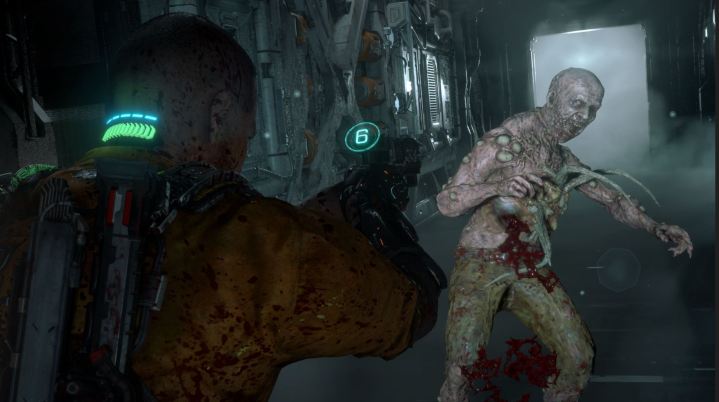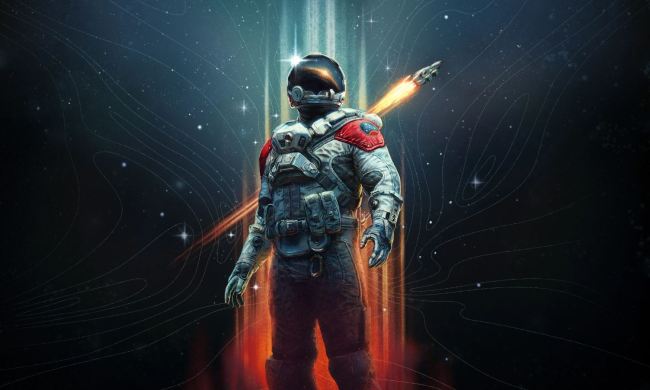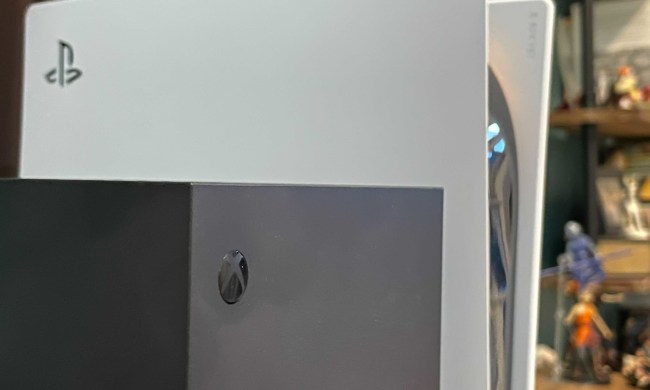The Callisto Protocol is a spiritual successor to Dead Space, and it’s not hiding that fact. From the unsettling aesthetics to the limb-slicing combat to the player’s HP being displayed on the main character’s body, it’s clear that Dead Space creator Glen Schofield is trying to capture lightning in a bottle twice with Striking Distance Studios’ debut game.
The most surprising part? The team might have actually pulled it off.
Digital Trends played about an hour and a half of The Callisto Protocol on PS5, all of which took place within the game’s third chapter: Habitat. My adventure through a ruined water purification facility highlighted the strengths of the game’s visuals, sound design, and difficulty that make me fear for the protagonist’s life in the same way I did for Isaac Clarke in the original Dead Space.
Gross protocol
In The Callisto Protocol, players try to escape the Black Iron Prison on Jupiter’s Callisto moon after a mysterious alien force attacks, killing and destroying anything in its way. In the game’s third chapter, I was tasked with making my way through a water purification facility as I tried to get on a train to take me to another part of this doomed detention center. The narrative was light during this demo, mainly involving environmental storytelling and the occasional transmission from when the Black Iron Prison fell into chaos.
The main character of The Callisto Protocol, Jacob Lee, is portrayed by Josh Duhamel. The protagonist being a Hollywood star didn’t make too much of a difference during my demo, as the dialogue was minimal (he mostly just grunted or screamed). It’s hard to tell if Jacob will become as memorable or iconic as Isaac Clarke based on the time I’ve spent with him so far.
Even with some light narrative hooks, I felt motivated to complete my objectives and get off this moon because of how disgusting Black Iron Prison is. Really, it’s downright gross. From visuals to sound design, everything in The Callisto Protocol is purposefully off-putting and icky. Dead Space’s influence in the creation of its world is evident, as I trekked through a primarily brown and dirty sci-fi facility with grotesque aliens that wanted nothing else but to slaughter me. Though I wouldn’t use the word “pretty” to describe Black Iron Prison, I don’t need that as a knock on its visual quality. On the contrary, it looks fantastic.

As I completed the objective, I had to trudge through lots of dirty and slimy water, blood and guts, and alien goo. The sound design is equally pulpy and visceral, as every squishy noise added to the unsettling ambiance. Even the PS5’s DualSense helps pump that up with detailed haptic feedback reflecting whatever my character was doing. While this isn’t a new concept by any means, this team executed it with the same confidence that helped spawn Dead Space, which is getting a remake soon.
Uncomfortably good
The Callisto Protocol stresses you out through gameplay, as combat encounters can be quite challenging. Like in Dead Space, any aliens the player comes across are significantly stronger than Jacob Lee and can kill him quickly if you aren’t careful. Disabling enemies by shooting their limbs is just as important as landing the killing blow. If you run out of your limited ammo or the enemy gets too close, you’ll have to resort to melee combat.
Players can dodge and block attacks by pointing the control stick in the right direction during melee combat. I didn’t get the hang of this during my demo, but there’s clearly some unexplored depth there. Alternatively, players can use the GRP to pick up objects (or enemies) and throw them. Occasionally, you’ll encounter deadly machines you can throw enemies into, and these are some of the most satisfying power trip moments.
It’s just as easy for Jacob Lee to die. Ammo is scarce, melee combat requires precision, and the camera is so close to Jacob Lee’s back that it’s hard to deal with enemies that pop up behind you. The best encounters in the Dead Space series were about spacing and targeting the right limbs, and every The Callisto Protocol battle I fought was crafted with that same mentality. And if you do fail and die, you’re greeted with a hyper-visceral death scene, like Jacob Lee’s face getting torn off.

By the end of my time with The Callisto Protocol, I’d explored a deteriorated water purification facility, drained water from Black Iron Prison, slid down a deadly slide in a sewer in a segment that felt straight out of the Xbox 360 generation, and started exploring an outside habitat that was a bit prettier (but still quite deadly). I was unsettled but enthralled the entire time. Making players uncomfortable in a way that’s still engaging is tough to pull off, and The Callisto Protocol seems to have gotten it right, and I can’t wait to see if the whole game can carry on this momentum.
While the game impressed during my short playtime, I can’t fully ignore that the developers on the project reportedly crunched hard during development to get the game to this level. It’s a dark shadow looming over what should otherwise be a smash hit in December. No game’s quality should come before the well-being of its developers, so I hope Striking Distance Studios has taken steps to improve working conditions behind the scenes, as they have a ton of talented developers who made something that seems remarkable.
The Callisto Protocol will be released for PC, PS5, and Xbox Series X on December 2.
Disclosure: Striking Distance Studios and PR agency Fortyseven Communications paid for travel and accommodations so that Digital Trends could participate in this preview event in San Francisco. This did not influence Digital Trends’ coverage of the game.



